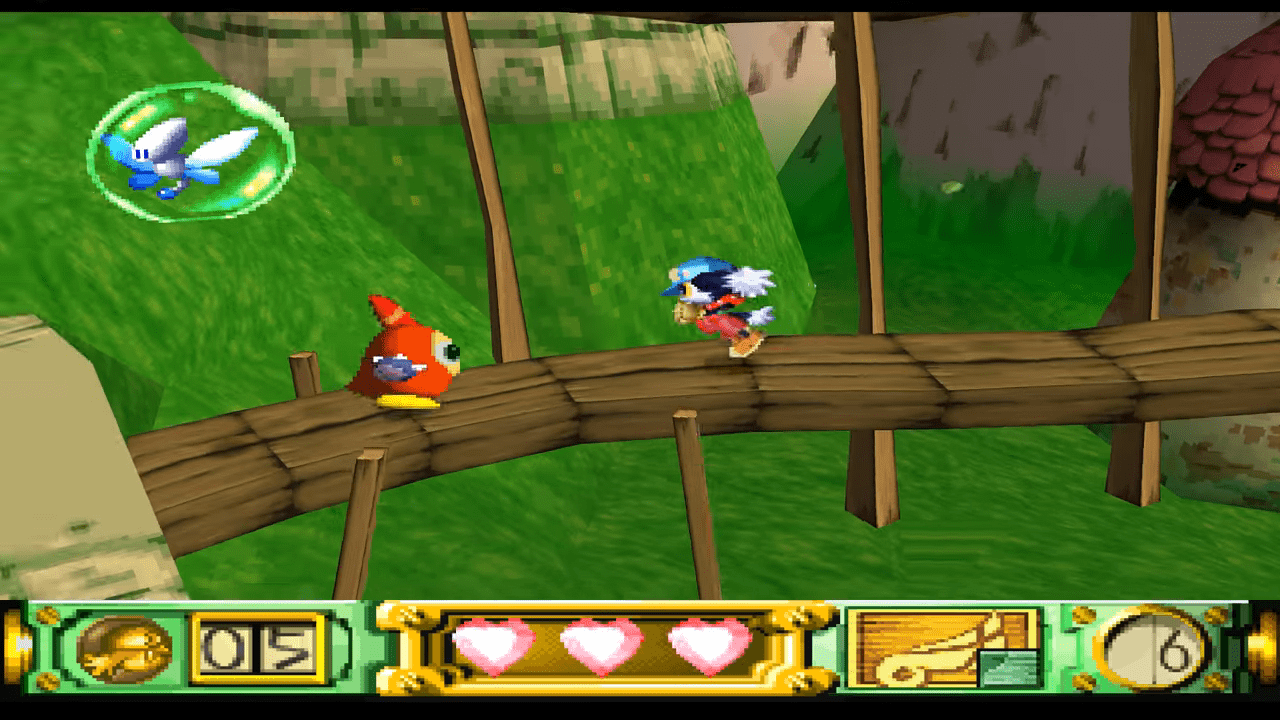
It's especially nice that you can jump from one path to another, and that those paths are clearly defined. Klonoa uses the 3D environment in clever ways, introducing branching paths, which is a more seamless way of getting to bonus areas than handled in older platformers. Camera control is also excellent, without any angles that hinder gameplay, unlike the Pandemonium series. There is no place where you feel confined to two dimensions or locked out of areas you can't reach. As you progress from stage to stage, you learn new moves almost effortlessly. Learning how to grab your enemies and use them as springboards and barrier is a subtle art, and although not necessary, the grab and jump becomes a powerful tool to get bonus items. Like the best platforming games, it starts you out with basic ability exercises, and begins to ramp up the difficulty. From the first level on, you're going to love the game design.

Namco's Klonoa, for example, is probably the first 2.5D platformer that makes use of classic 2D game elements without sacrificing the versatility of a 3D environment. Leave it up to the Japanese game designers, though, to perfect an American concept. The full list can be found on the PlayStation Blog.Ĭall Star online editor Channing King at (317) 444-8073.Between two-dimensional platformers like Tomba and 3D world-exploration platformers like Gex 2 exists a strange creature called the two and a half dimensional platformer, otherwise known as "2D game done with polygons." The subgenre got created with Sega's Clockwork Knight, and in general, hasn't been very popular, primarily because the games may look good, but the gameplay is stuck on invisible rails.



 0 kommentar(er)
0 kommentar(er)
